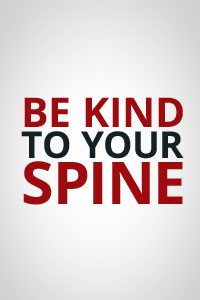Your spine is the backbone—literally and figuratively—of your body’s overall health and mobility. It supports your movements, protects your nervous system, and keeps you upright. However, it’s often neglected until pain arises. Maintaining a healthy spine requires a combination of proper posture, targeted exercises, and lifestyle adjustments. Here’s a deep dive into how you can care for your spine and avoid common back problems.
Exercise for a Resilient Spine
Engaging in a well-rounded exercise program is vital for maintaining a healthy back. A good routine should include exercises to stretch and strengthen your back muscles, particularly the extensors that help you stand, lift, and move. Strengthening the muscles supporting your back, such as the core and glutes, also plays a critical role in spinal health. Avoid exercises that place excessive strain on your spine, such as movements involving hyperextension or heavy, unsupported lifting.
Yoga and Pilates are excellent for improving spinal flexibility and stability. Incorporating exercises like the plank and bird-dog can strengthen your core and back muscles. Regularly practicing these activities helps prevent injuries and supports overall back health.
The Role of Strong Abdominals
Often referred to as the “anterior back muscles,” the abdominals play a crucial role in supporting the spine. Weak abdominal muscles can lead to poor posture and excessive arching of the lower back, known as lordosis. This condition places undue stress on the posterior elements of the spine, increasing the risk of pain and injury.
To strengthen your abdominal muscles, include exercises such as sit-ups, leg raises, and oblique twists in your workout routine. Strengthening your core creates a stable foundation for your spine, reducing the risk of strain and injury during daily activities.
Posture Matters: Standing and Sitting
Good posture is essential for maintaining spinal health. When standing, align your head over your pelvis and keep your shoulders back. Avoid standing in one position for too long; instead, shift your weight periodically to reduce strain on your back.
Sitting posture is equally important. Choose a chair that supports your lower back and allows your feet to rest flat on the floor with your knees level with your hips. If your chair lacks lumbar support, use a cushion or rolled-up towel to maintain the natural curve of your spine. Sitting with proper posture minimizes stress on your back and prevents discomfort over time.
Traveling with Back Health in Mind
Long car rides can be taxing on your spine. To reduce discomfort, use a lumbar pillow or a rolled-up towel to support your lower back. Adjust your car seat to sit as far forward as comfortably possible, allowing you to avoid overreaching for the pedals. Take breaks every hour to stretch and walk around, reducing stiffness and promoting circulation.
If you’re flying, consider bringing a neck pillow for support and get up to stretch whenever possible. These small adjustments can make a big difference in maintaining spinal comfort during travel.
The Right Footwear for Spinal Support
Wearing comfortable, supportive shoes is essential for maintaining proper posture and reducing strain on your spine. High-heeled shoes shift your body weight forward, placing additional stress on your lower back. Opt for orthopedically sound footwear with adequate arch support to promote proper alignment and reduce the risk of back pain.
Safe Lifting Techniques
Improper lifting is a common cause of back injuries. To lift safely, stand close to the object with your feet shoulder-width apart. Bend your knees while keeping your back straight, and tighten your abdominal muscles before lifting. Use your legs to power the movement, not your back, and hold the object close to your body to maintain stability. These techniques minimize the risk of strain and injury.
Maintaining a Healthy Weight
Excess body weight puts additional strain on your spine and the muscles supporting it. Maintaining a healthy weight through a balanced diet and regular exercise reduces this load and alleviates stress on your back. Focus on whole, nutrient-dense foods such as fruits, vegetables, lean proteins, and whole grains to support your overall health and spine.
Managing Stress for a Healthy Spine
Stress is a significant contributor to back pain. When stressed, muscles in your back can tense up, leading to discomfort and stiffness. Incorporate stress-reducing practices into your daily routine, such as meditation, yoga, or deep-breathing exercises. Learning to manage stress not only improves your mental health but also helps protect your spine from tension-related issues.
Consistency Is Key
Caring for your spine requires consistent effort. Small daily habits, like practicing good posture, staying active, and managing your weight, can make a significant difference in your spinal health over time. Regular check-ins with a chiropractor or physical therapist can also help identify and address any underlying issues before they become severe.
Your spine is a vital component of your overall health and well-being. By incorporating these tips into your daily life, you can protect your back from injury, alleviate pain, and maintain mobility for years to come. Remember, taking care of your spine is an investment in your long-term health and quality of life. Be kind to your spine—it’s the only one you’ve got!













